The upcoming iPhone 14 line is almost certainly going to be a powerful step forward - and the iPhone 14 Pro will be the flagship device in the lineup.
The Pro is set to come with powerful cameras, the faster, modern processor and the best screen technology - where the iPhone 14 ‘base’ model will come with an older CPU and likely less-capable cameras to save money where users might not need every high-end spec.
However, the latest rumor has given me pause: according to ‘unnamed sources’ from iDropNews , the iPhone 14 Pro and Pro Max will feature the same upgraded Lightning Port that debuted on the original iPad Pro , which used USB 3.0 tech to deliver far-greater speeds than the aged USB 2.0 port that iPhones still use.
While that’s a big upgrade - it could yield up to 10 times faster data transfer - it’s still a world away from the speeds that the USB-C ports used on the current iPad Pro and iPad Air tablets could offer.
Apple has been steadfast in sticking with the Lightning port since it launched in 2012 - while EU regulations state that it will have to start using USB-C ports eventually in its iPhones, there’s no firm date on when that will happen and Apple will likely resist as long as it can.
Why? Because it makes so much in licensing its tech to allow manufacturers to make Lightning-friendly accessories. It’s built an ecosystem of compatibility that any brand would be reluctant to shed. So, with that in mind, an iPhone with the same USB-C connector found in the iPad Pro seems highly unlikely.
Pro-found issues
However, that reluctance (if true, and it’s a big if when we’re working with ‘unnamed sources’) will give me a real issue if it comes to pass.
This year looks very likely to be the first to see iPhones launched on different chipsets (well, you could point to the iPhone 5C, which came alongside the iPhone 5S, but they were very different phones) and that would be clearest indication yet that Apple is trying to set the iPhone 14 Pro apart from the cheaper model.
That’s fine - and honestly, it makes a lot of sense. The iPhone Pro line has been too close in performance and spec to the base models for many years, with only the camera and more RAM providing the key differences.
Making the high-end, expensive phone more powerful and desirable for creatives and those that need more grunt in their device, especially if it delivers capabilities the iPhone 14 cannot, will make the Pro a far easier upgrade for people like film-makers, who will want all the power and camera prowess to get their jobs done more easily.
So if the rumors are true, and Apple does stick with the Lightning port, then it’s missing a real trick. The USB-C connection would deliver much faster speeds for those that need it for their jobs, and wouldn’t be a lure for those that just want a good phone - ie, the masses that will keep buying Lightning accessories.
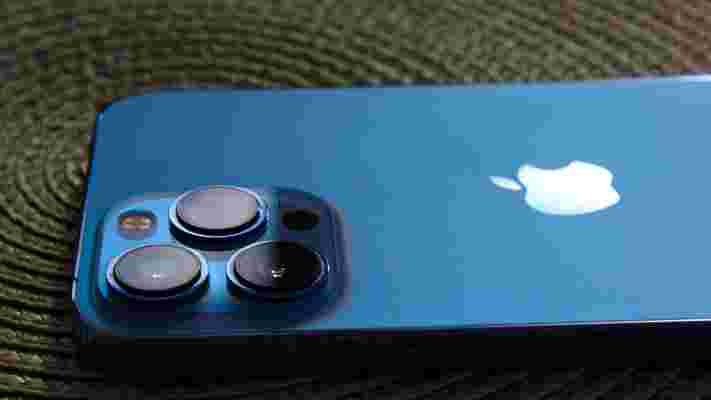
Those that would need the USB-C sporting iPhone 14 Pro - such as the creatives mentioned - would also have the right equipment to make the most of the upgraded speeds, where many others wouldn’t really benefit from the higher speeds.
I tested the iPhone 13 Pro Max (with the older Lightning connector) against the new iPad Air 2022 , which has USB-C.
The former managed to transfer a 320MB file at 8.25MB/s, where the latter got up to 10.5MB/s, both connected to a USB-C port on my laptop.
That’s not a massive difference (although will still result in many minutes saved for a 20 minute 4K file being copied) but better equipment - with high-end Macs and better connections, like those that creatives often invest in - would see a greater disparity in the read speeds.
Another reason Apple should ape the iPad Pro and bring the USB-C connector to the iPhone 14 Pro.
Of course, it’s not going to happen, mostly for the reasons listed above. And that’s a real shame, as an iPhone 14 Pro with USB-C would have been a real leap forward and made it a truly attractive phone for professionals.
Not to mention the ease that it would bring to many people's lives. USB-C is becoming a common standard the world over (including for iPads, which many iPhone owners will have) and losing the Lightning cable would take away one more headache for users.
This haptic glove lets you feel the virtual reality metaverse
Haptic gloves have been around for years, allowing you to ‘feel’ objects in virtual reality. But most of these haptic accessories are difficult to set up, need to be wired to your VR system, require additional tech and are eye-wateringly expensive.
We recently tested the SenseGlove Nova, a pair of haptic gloves which are different in that they work with standalone headsets (like the Oculus Quest 2 ), don’t require a lengthy set-up process and don’t need wires either.
Sold as part of a development package for cutting edge VR brands that starts at €3,999, these gloves are still expensive and (sorry) not made for at-home use, at least not yet. But they could represent a step forward in making VR not only look real but feel real, delivering a more immersive experience. This step could significantly impact the VR future that many major tech companies are betting big on over the next decade.
What are haptic gloves?
Haptic tech, which simulates the sensation of touch, is already built-in to our phones, games controllers and even some gaming headsets – that’s where the vibrations come from. But haptic gloves that look straight out of science-fiction movies (think mid-90s Keanu in Johnny Mnemonic ) are what we need to ‘feel’ objects and environments in VR.
Consider how you feel the world around you.
Essentially, the gloves use actuators and motors to attempt to replicate the resistance you feel when gripping an object. When you go to pick up a tennis ball, for instance, between your thumb and forefinger, the tips of those fingers won't meet – the physical space between them is filled by the ball, and you have to exert some force to maintain your grip on the sphere.
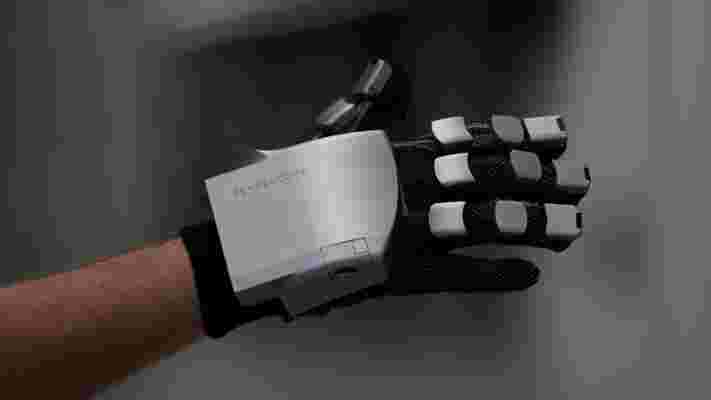
By restricting the full range of motion that your thumb and forefinger can reach when interacting with a digital tennis ball for the same purpose, the SenseGlove Nova can replicate the sensation of holding a physical object with real-world properties.
Pressure is only part of the puzzle. Nova also promises the way the actuator works within the gloves means it can replicate the feeling of buttons and specific objects rather than simply delivering basic vibrations to your fingertips.
What are haptic gloves good for?
The SenseGlove Nova haptic gloves aren’t aimed at home users right now. Instead, Nova has its sights set on enterprise uses.
Think training people to put together machinery or instructing them how to deal with disasters or medical procedures. They’re scenarios that require a vast amount of skill and knowledge, as well as real-world experience, which could be delivered via a VR headset and a pair of haptic gloves to minimize risks.
Our time with the SenseGlove Nova focussed around such a use case – if only in a light hearted way. We were tasked with creating a robot on an assembly line, putting together the nuts and bolts, arms and legs, with a mixture of tools. Though the sensation needs a fair bit of finessing before it would mirror a real world interaction, the gloves (which during our demo paired and attached with the Oculus Touch controllers for tracking) did give the feeling that we were not only holding a power drill, but that we could adjust the pressure of the trigger to adjust it's drill spin speed, too.
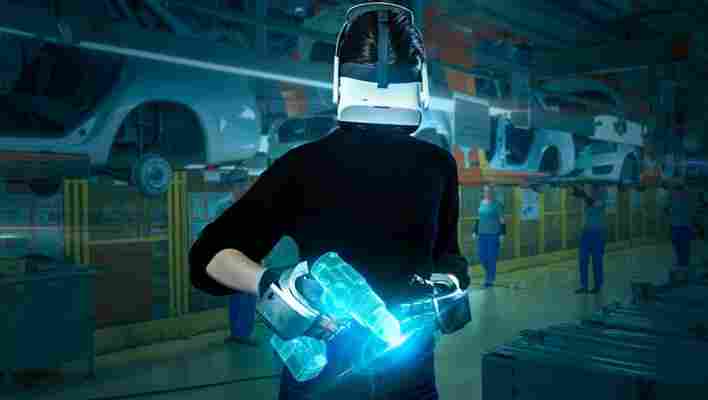
While the smoothness of natural finger movement hasn't been captured yet (there's the feeling of gears and pulleys clicking into place as you use the glove, which very much still feel DIY and prototype-like in their construction), it certainly captures the sensation of holding something – and is a damn sight more immersive than using the many wand-like controllers that currently characterise VR interaction.
Training is just one use case. Nova tells us they could also be handy (excuse the pun) for product design and engineering, allowing people to literally and figuratively pressure test ideas before making them in real life.
Some companies already make similar accessories if you’re interested in a pair of haptic gloves to upgrade your at-home VR experience. The SensoryX VR Free Gloves and Captogloves tend to come highly recommended for basic haptic feedback, and they work with some of the best VR headsets . However, they look more like gloves you’d take on a camping trip than anything more futuristic.
HaptX is considered one of the best options on the market for providing realistic touch sensations. But, it is still only really used for professional-grade applications and needs to be set up professionally to work.
Haptics is clearly an essential part of ongoing VR and AR development. We know Meta believes touch is important for the brand’s future after it unveiled a prototype called the Meta Glove in late 2021.
After all, if Mark Zuckerberg’s vision of a “metaverse” in which we all live, work, play, build and (for some reason) go to concerts in VR will ever become a reality, then being able to touch the world around us will be essential in making it feel real and exciting enough for us to keep visiting. The SenseGlove Nova is primed to be at the heart of that experience.
Don't hold your breath for the Garmin Forerunner 255 – we don't really need it
The venerable Garmin Forerunner 245 is approaching its third anniversary, and is definitely due an upgrade as the company begins refreshing its lineup of sports watches – but do we really need it?
First, it's worth taking a moment to explore the current lineup of Forerunners. At the bottom, we have the entry-level 50 series. Above this, we have the 240 series. These are running watches for athletes who want to take their training to the next level, and perhaps start racing seriously.
Next, we move up to the Forerunner 740 range, which are designed with triathletes in mind and switch effortlessly between swim, cycle, and run tracking modes. Finally, at the top, we have the 940 line of devices, which is similar but also boasts super-long battery life for multi-day events.
Most of the current Forerunner range is at least two years old, if not three, and well due an update. Garmin began the process last year when it revealed the Forerunner 55, and we're expecting the rest of the series to follow in due course. Well, most of it, anyway.
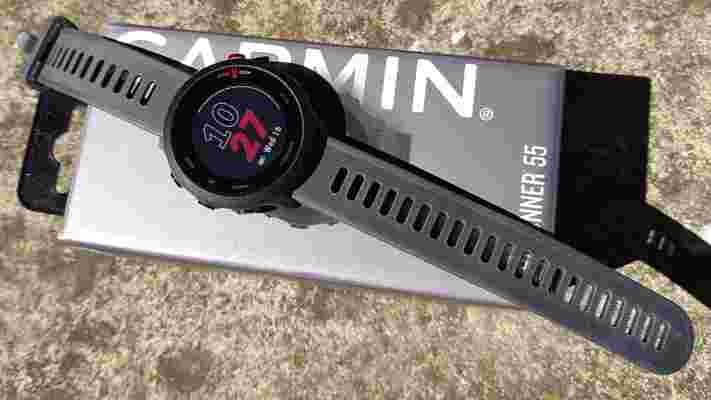
The Forerunner 55 is an excellent watch; not only is its GPS tracking extremely accurate (which you'd expect from a company that made its name in satellite navigation systems), its heart rate monitoring is highly responsive, and it's packed with new training tools to help you structure your runs, and balance rest and recovery.
It's so good, in fact, that we just don't need a Forerunner 255. It might be beginner-friendly, but the 55 has everything that an intermediate runner needs as well.
Calling time on the 250 line
It wouldn't be the first time Garmin has phased out a Forerunner line. The Forerunner 100, 300, and 400 series have all been discontinued over the years as technology has advanced, and other watches in the range have filled the gaps.
The only feature we can see the Forerunner 255 potentially bringing to the party is the real-time stamina graphic introduced with the Garmin Fenix 7 . This is a neat graph that shows how much energy you have left in the tank during runs and rides, so you can adapt your effort on the fly. No more running out of energy partway through a training run, or ending a race wishing you'd just pushed a little bit harder.
It's also possible that the Forerunner 255 could add music storage to the mix, but Garmin doesn't typically release a whole new watch model just for that. If that was a route it wanted to take, it would likely launch a Forerunner 55 Music edition instead, as it did with the Forerunner 245 and 245 Music.
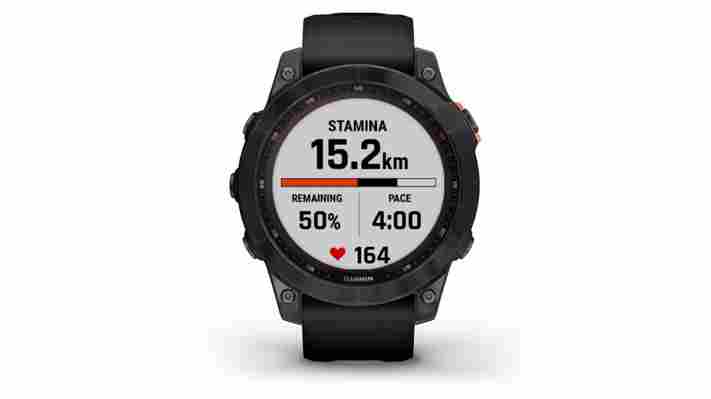
Of course, we can only speculate at this point – and even if the company doesn't release a Forerunner 255 this year, it may pick up the name again at a much later date for a different device,
In late January the Garmin revealed not just the Fenix 7, but also the Epix - a very similar watch, with the addition of a bright AMOLED display. However, this shiny newcomer is officially the Epix (Gen 2).
The original Epix was a touchscreen sports watch released in 2015 that was somewhat ahead of its time. Although it worked well, it was a bit of a monster, and it was some time before technology caught up with its designers' intentions and its components could be packed into a more modestly sized case.
If a Forerunner 255 doesn't arrive this year or next, it may still appear in a revamped form at some point in the future. Only time will tell.